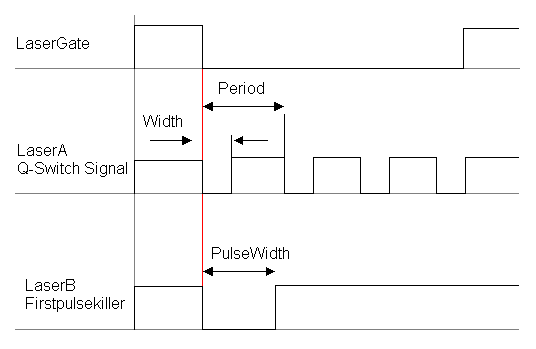|
<< Click to Display Table of Contents > Laser_Gate, Laser_A, Laser_B |
  
|
|
<< Click to Display Table of Contents > Laser_Gate, Laser_A, Laser_B |
  
|
All three outputs can operate in opto-isolated mode. For this the EXT_LASER_VCC (pin 11) and EXT_LASER_GND (pin 30) must provide the supply. EXT_LASER_VCC may not exceed +5 V in respect to EXT_LASER_GND.
As default the opto couplers take their supply from internal VCC, which causes to eliminate the opto-isolation. In this case the voltage of all 3 outputs are TTL compatible in respect to GND. The mode can be selected by solder jumpers on the bottom side of the USC-3 as shown in figures 16 and 17.

Figure 16: Laser signal opto coupler external supply

Figure 17: Laser signal opto coupler internal supply (default)
The polarity of the Laser_Gate, Laser_A and Laser_B outputs is selected via software settings. Default is active low.
|
During USC-3 startup and when the laser signals are disabled by software, the Laser_Gate, Laser_A and Laser_B will go into tri-state. It must be assured that the Laser defaults to a safe operation in this case. Potentially, a pull-up or pull-down resistor (about 4k7 ohm) has to be added to put the laser into a safe state. |
|---|
For YAG style laser mode the output timing (active low mode) is as follows:

Figure 18: YAG laser control signals (active low)
The maximum output frequency for the Laser_A and Laser_B is 4 MHz, the period resolution is about 80 ns. The minimum output pulse width for Laser_A and Laser_B is about 167 ns.
|
The minimal output frequency of the laser signals is 0.190 Hz. This results from the 50 kHz reference frequency with 18 bit resolution which is used for frequencies < 381.46 Hz (= 0x20000). |
|---|